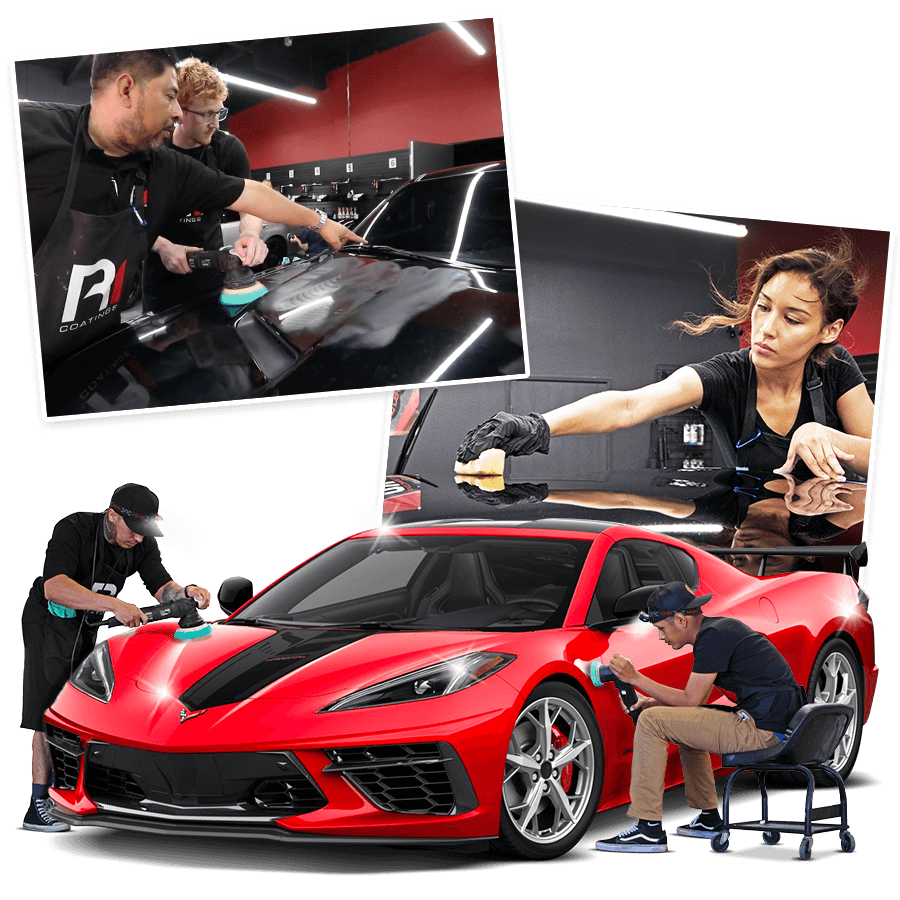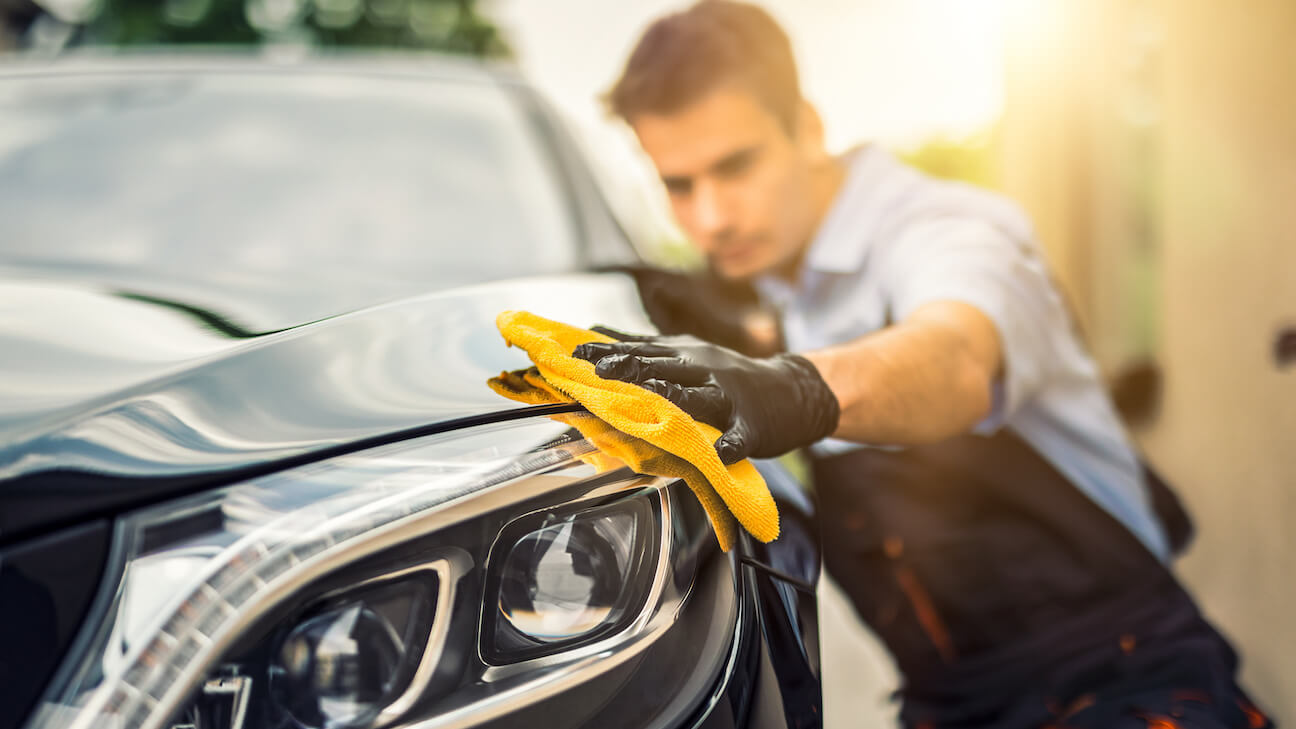Exactly How Automotive Coatings Give Resilient Luster and Durability
Automotive coverings are important for making certain automobiles maintain their visual charm while enduring different ecological difficulties. Understanding the intricacies of various coating kinds and their application techniques can dramatically affect a vehicle's long life and look.
Recognizing Automotive Coatings
Automotive layers play an important role in enhancing the longevity and appearance of vehicles. These specialized finishes are made to provide a safety layer over the car's surface area, protecting it against different environmental variables such as UV rays, chemicals, and physical abrasions. Typically, automotive finishings make up several layers, consisting of guides, base coats, and clear layers, each offering a specific purpose in achieving optimal efficiency.
Primers promote attachment between the substrate and succeeding layers, while skim coat supply shade and aesthetic charm. Clear layers give a shiny surface and additional security versus scrapes and fading. The choice of products in automotive finishes varies, with choices including polyurethane, acrylic, and ceramic-based formulations, each offering distinct advantages.
Recognizing the application process is vital, as it commonly calls for thorough prep work to ensure optimal bond and durability. Variables such as surface area temperature, tidiness, and moisture can significantly affect the performance of the covering. As the automobile sector remains to advance, advancements in finishing technologies aim to enhance the efficiency features of these safety layers, adding to enhanced automobile durability and a much more appealing visual.
Advantages of Durable Luster
While the aesthetic appeal of an automobile is usually prioritized by proprietors, the advantages of a durable shine extend far beyond mere visual improvement. A resilient luster not just raises the total look of the lorry but likewise works as a safety barrier versus ecological aspects. This protective layer assists to stop damages from UV rays, roadway salt, and toxins, which can lead to deterioration and degeneration gradually.
Moreover, a lasting sparkle minimizes the frequency of upkeep called for to keep the lorry looking beautiful. With enhanced resistance to dust and grime, lorries stay cleaner for longer periods, lessening the need for normal laundries and detailing. This equates right into time and price savings for automobile owners.

Types of Automotive Coatings
A range of automotive coatings are readily available, each created to meet certain needs and choices of car owners. These layers can be broadly classified right into numerous kinds, including clear layers, ceramic coatings, and paint sealers.
Clear coats are generally used to give a protective layer over the base paint, improving gloss and protecting versus UV rays, contaminants, and small scrapes. They are vital for maintaining the automobile's aesthetic appeal and integrity over time.
Ceramic finishes, on the other hand, stand for an even more innovative option. Made up of nano-ceramic particles, they produce a strong chemical bond with the lorry's surface, offering exceptional longevity and resistance to chemicals and ecological aspects. This sort of covering offers a long-lasting shine that can considerably minimize the regularity of maintenance.
Paint sealants are artificial items developed to create a safety barrier over the paint, using a glossy surface and improved security against the elements. While they commonly last less long than ceramic coatings, they are much easier to use and are frequently a lot more cost-effective.
Choosing the appropriate vehicle finishing depends upon numerous factors, including desired durability, maintenance requirements, and budget considerations.
Application Process and Strategies
When it comes to using automotive coverings, thorough prep work is key to achieving a flawless finish and optimal bond. The application process begins with complete cleansing of the automobile's surface area to eliminate impurities such as dust, grease, and old wax. This is typically complied with by brightening or sanding to eliminate blemishes, guaranteeing a smooth substratum for the coating.

The application technique differs depending upon the layer kind; as an example, spray applications call for regular movement to stop drips and runs, while brush applications might demand mindful strokes to avoid brush marks. In addition, ecological elements such as temperature and moisture need to be checked, as they can dramatically affect healing times and final appearance - AODetail & Automotive Coatings. Following these best practices makes certain that auto coverings not only improve aesthetic imp source appeals however likewise supply resilient protection against the elements
Upkeep for Optimum Resilience
Correct maintenance of automobile finishes is crucial for ensuring optimal sturdiness and resilient efficiency. Normal cleansing is crucial; making use of a pH-neutral auto shampoo can stop the degradation of the finishing, while staying clear of rough cleansers ensures the surface area stays unmarred. It is suggested to clean the automobile every two weeks, especially in rough climate condition, to remove contaminants that can bond to the surface area.
In addition, applying a high-quality sealant or wax every couple of months can improve the protective layer, supplying an extra barrier versus UV rays, dust, and toxins (AODetail & Automotive Coatings). This layer not only improves sparkle but also aids in the durability of the underlying layer
For automobiles revealed to severe elements, such as roadway salt or tree sap, prompt elimination is important to stop damage. Routine examinations for indications of wear or damage can assist in early treatment, ensuring that any kind of needed touch-ups or reapplications are dealt with immediately.
Verdict
To conclude, vehicle layers work as essential protective layers that boost both the aesthetic charm and longevity of automobiles. By like it offering resistance against ecological elements and decreasing maintenance requirements, these layers contribute dramatically to the preservation of lorry outsides. The range of offered formulas, along with appropriate application techniques and recurring maintenance, makes certain that the lasting luster and honesty of automobile surface areas are effectively preserved, inevitably expanding the life expectancy of the lorry's look.
Automotive layers are crucial for making certain lorries maintain their visual charm while holding up against different environmental challenges.Automotive layers play an important duty in improving the sturdiness and appearance of vehicles. These specialized coverings are developed to provide a safety layer over the car's surface, guarding it against numerous environmental elements such as UV rays, chemicals, and physical abrasions. As the vehicle sector proceeds to advance, innovations in covering innovations aim to boost the efficiency qualities of these protective layers, adding to boosted automobile longevity and an extra attractive aesthetic.
In verdict, automotive finishings serve as important safety layers that improve both the aesthetic charm and resilience of vehicles.